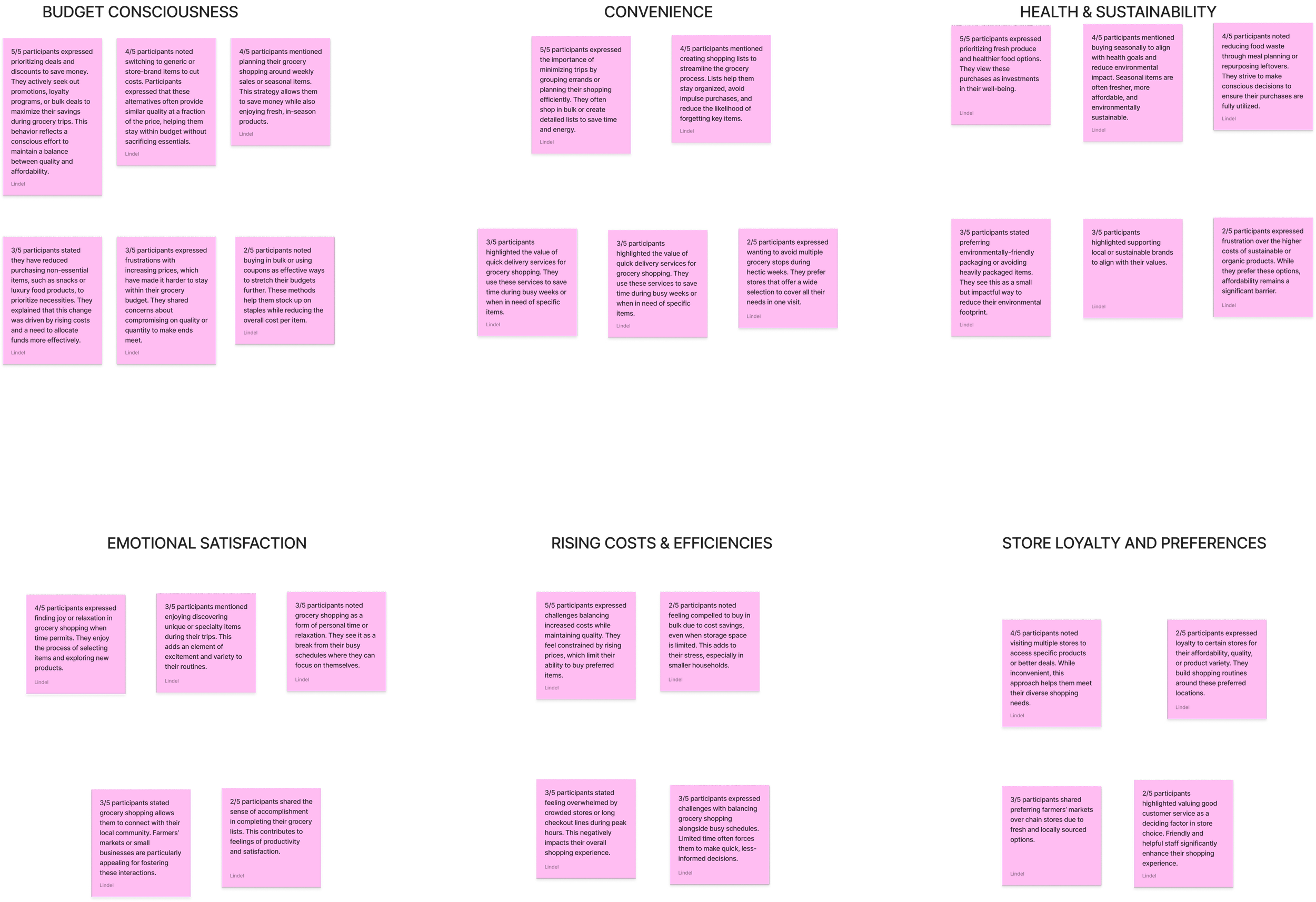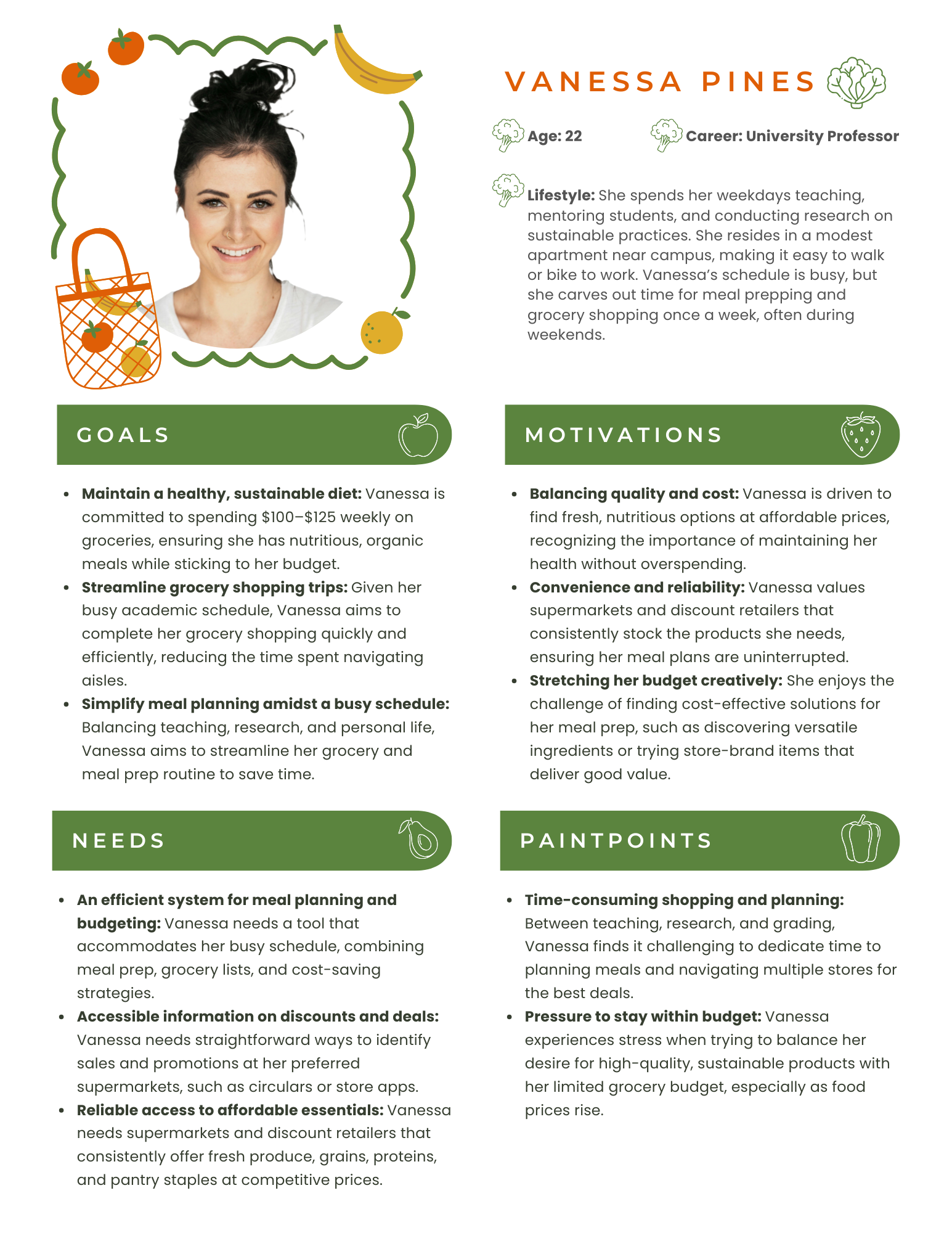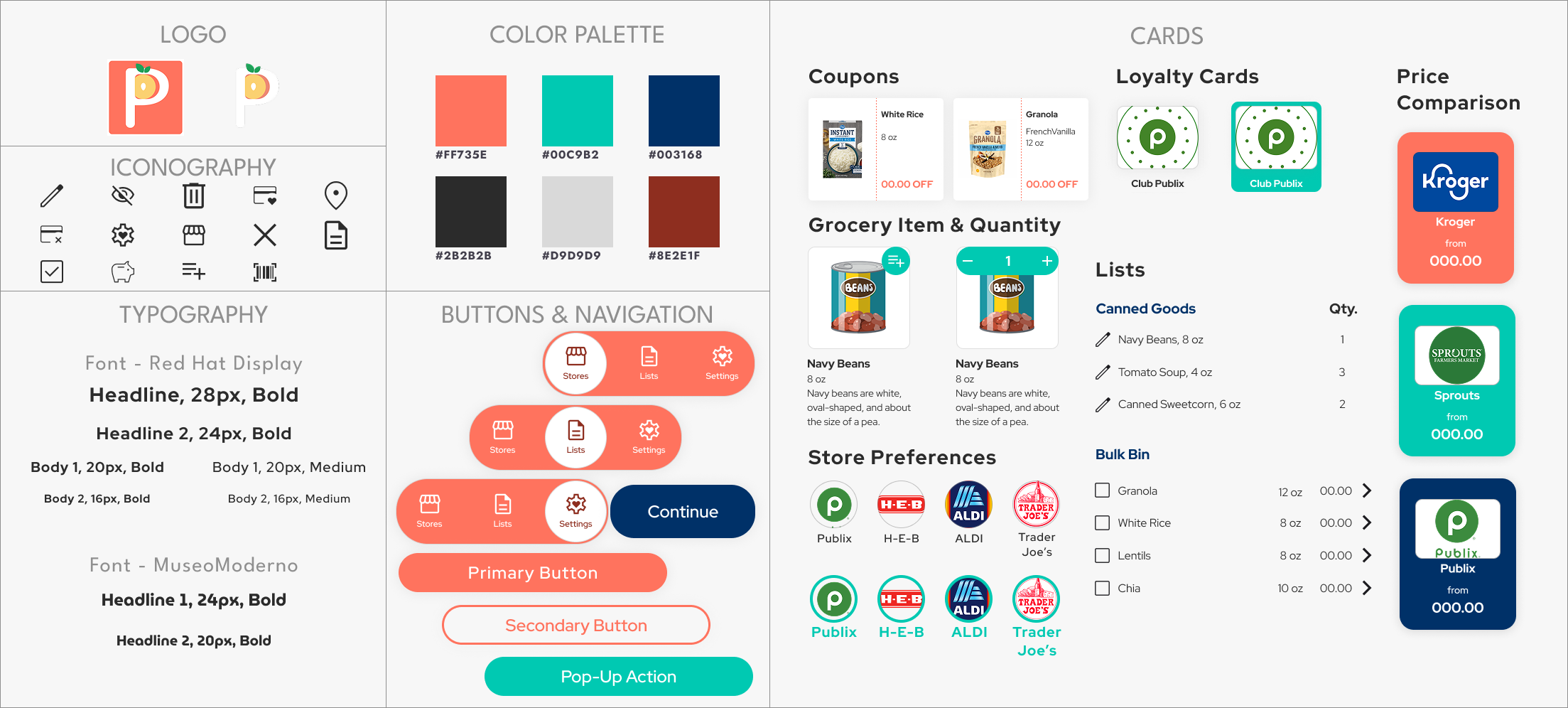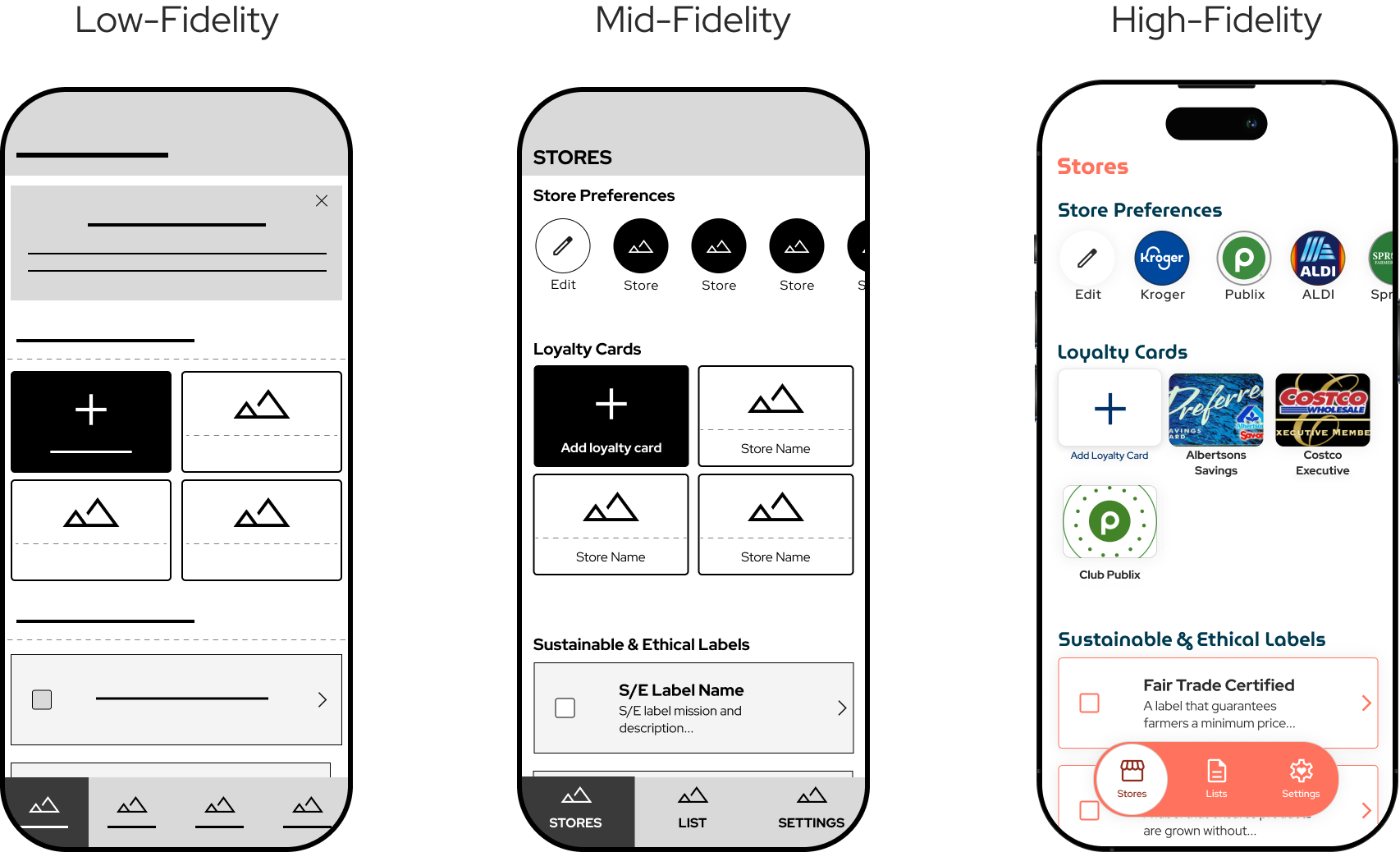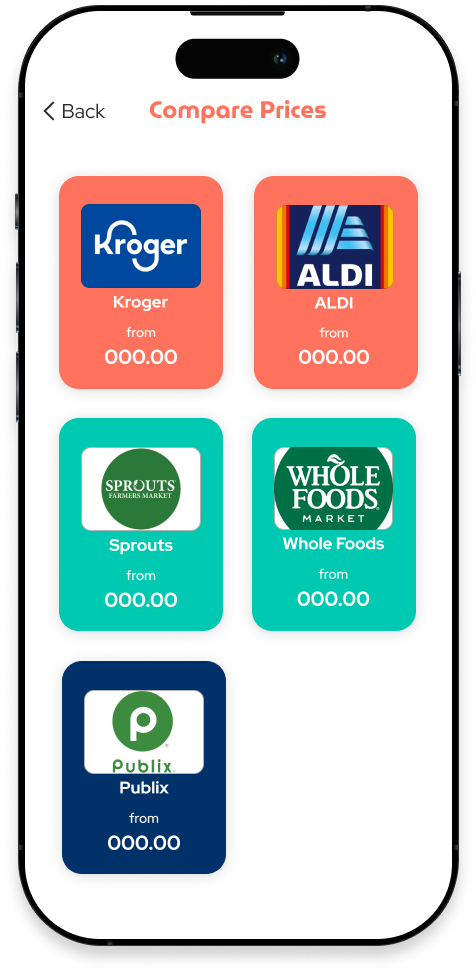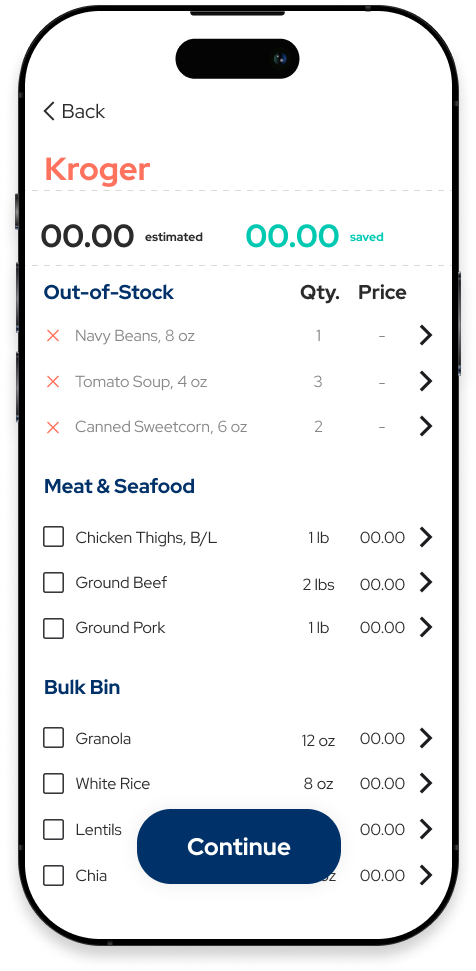App Design:
Peachy Price
One of the major topics of the 2024 U.S. election was the issue of rising costs of groceries. The main problem was the lack of an efficient tool for shoppers to compare grocery prices across multiple stores, leading to overspending and inefficient shopping trips.
Role
Sole UX/UI designer + brand designer, with support from my mentor, Ayelén Malaquin, and feedback from design critique facilitators and peers.
Problem
Rising grocery costs have put financial strain on many households, and shoppers currently rely on manual methods or multiple apps to check prices.
Tools
Figma, Google Meet, and Zoom
Solution
An app that compares grocery prices across stores of the shopper’s choice by providing real-time price comparisons, availability tracking, and coupon searching.

Introduction
User: Seek convenience and savings through streamlined shopping, discounts, and alignment with personal values.
The Users
This app caters to busy individuals and families who seek a convenient, organized saving experience.
The Product
Peachy Price aims to be the ultimate app for grocery savings, with its core feature enabling price comparisons across stores through a shopping list.
The Goals
Business: Drive cost-effective solutions, user retention through exclusive deals, and seamless price comparison with a sustainability focus.
Technological: Prioritize real-time price tracking, intuitive design, and personalized recommendations with built-in sustainability features.

Research
Methods
The solution came from blending insights across multiple research methods:
User Interviews
Survey
Affinity Map
Competitive Analysis
User Interviews
Five (5) remote and moderated interviews
Objectives:
By conducting these interviews, I aimed to:
understand shopping and spending habits
identify challenges with rising grocery prices
explore shopper needs and preferences
What I learned: Their top priorities are saving money, shopping efficiently, and getting fresh, high-quality goods. Sustainability and local support matter but often take a backseat to budget concerns.
Beliefs
What I learned: For many, grocery shopping is both a necessity and a chance to shop mindfully—making healthier choices, reducing waste, and supporting ethical or local food when possible.
Pain Points
What I learned: With prices rising, they swap name brands for generics and cut non-essentials, but finding one store that balances cost and quality is tough.
Motivations
Preferences
What I learned: The ideal grocery experience? Affordable, convenient, and high-quality. Shoppers prefer well-organized stores with good deals. While some enjoy specialty markets, most value practicality and time savings.
Gaining Insights
4. Emotional Satisfaction
For many, grocery shopping is both practical and personal—offering relaxation, excitement, and a sense of achievement. Finding specialty items, supporting local businesses, and engaging with the community make the experience more meaningful.
Habits
What I learned: Shoppers plan ahead, use lists, and stick to weekly trips or bulk buys to stay efficient and cut costs.
2. Convenience
Efficiency is a big priority—shopping in bulk, using lists, and choosing stores with a wide variety to minimize trips. Quick delivery services are in demand for added flexibility, especially when in-person shopping is tough.
3. Health & Sustainability
Health-conscious decisions drive grocery choices, with participants prioritizing fresh produce, seasonal items, and meal planning to reduce waste.
6. Store Loyalty & Preferences
While price and variety influence store choice, many shoppers visit several places to snag the best deals or specific items. Customer service, fresh local products, and a good overall experience build loyalty to certain stores.
5. Rising Costs & Inefficiencies
The struggle lies in balancing rising costs with preferred quality, leading to tough compromises. Other challenges include long lines, crowded stores, and limited time, which add extra stress.
1. Budget Consciousness
Participants focus on cost-saving strategies like finding deals, using loyalty programs, and switching to generics to keep prices low without sacrificing quality. As prices rise, they’re adjusting by cutting non-essentials, buying in bulk, and planning around sales to stretch their budgets.

How might we streamline grocery trips while helping customers track savings?
Mid-Fi wireframe of Grocery List Home page
Savings, Sustainability, Shopping Lists O My!
Customers hunt for deals, swap for generics, and plan around sales, but rising prices make budgeting tougher.
To lessen the burden of the time and effort of grocery shopping, how might we streamline grocery trips while helping customers track savings?
Proposed Solution
An app that finds the cheapest grocery prices across stores, cutting down shopping time and effort.
Additional features like auto coupon searches, ethical product filters, and loyalty card integration make saving personal and seamless.
Feature Ideation

Designing the Solution
User Persona
My research helped shape the User Persona, focusing on:
maintaining a nutritious diet on a budget
prioritizing efficiency and minimizing time spent on routine errands
consistency, affordability, and access to discounts and sales
To address these concerns, goals, and needs, I created user flows that streamline grocery planning.
User Flows
For this project, the main flows considered for the shoppers experience are registration and onboarding, adding loyalty cards, creating a list, comparing items, and clipping list-specific coupons.
View the user flows and task flows in Figma
UI Exploration
The branding is vibrant, playful, and budget-conscious, using bold colors like orange, teal, and navy to create an engaging feel. It emphasizes convenience, personalization, and freshness through curated deals, and organic labels.
Key visuals like loyalty card discounts, fresh produce, and coupon integration highlight a value-driven, user-friendly shopping experience.
UI Component Library
Wireframe Progress

Usability Testing and Feedback
Usability Testing
The testing objectives were:
1) Set store preferences: Navigate the app to select their preferred grocery stores
2) Create and manage a shopping list: Add items to a shopping list
3) Compare prices between stores of preferences: use a list to compare price totals across selected stores
What Went Wrong
Some participants expressed disappointment for the lack of a section to filter for food allergens/sensitivities.
All participants suggested shortening the onboarding process and having the ability to skip it altogether.
One participant found the checkmark icon unclear for confirming a grocery item's quantity, interpreting it instead as an indicator of the selected item.
What Went Right
All participants found the registration and onboard process straightforward and helpful.
They found setting store preferences and creating a grocery list as intuitive features.
Participants loved the ability to compare prices, as well as the integrated coupons and store selection options.

The Solution
Stores (left) and Sustainable & Ethical (S&E) Label example (right)
Feel Peachy with Every Tap
The Stores page and Sustainable & Ethical (S&E) Labels section let shoppers set store preferences, add loyalty cards, and choose ethical product labels for smarter price comparisons.
The Grocery List page and List Creation page makes list-building easy with real-time saving, adjustable quantities, and custom list-naming for seamless cross-store price checks.
The Price Comparison page ranks real-time store prices, putting the cheapest options first.
Once a store is selected, the Chosen Store List Details page breaks down item prices, availability, estimated totals, and savings.
Grocery List (left) and List Creation (right)
Price Comparison (left) and Chosen Store List Details (right)

The Next Steps
What To Improve
Participants valued the app for price comparisons and savings but found navigation and feature access could be smoother.
Simplify Onboarding – Add a skip option and refine instructions for a smoother start.
Enhance Feature Clarity – Improve UI for lists, price comparisons, and coupon tools to reduce clutter and boost usability (e.g., product quantity confirmation).
Filter for Food Allergens/Sensitivities – Let users filter products by dietary needs in the Stores page.
What I Learned
Designing for grocery savings showed me how varied people’s priorities are—some focus on cost, others on convenience, health, or sustainability.
By refining UX/UI through iterative design, I made price comparisons intuitive, savings personal, and navigation seamless. This project reinforced the need to translate real behaviors into a design that feels both functional and user-friendly.
More Projects











